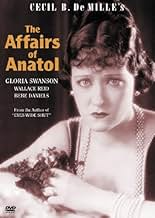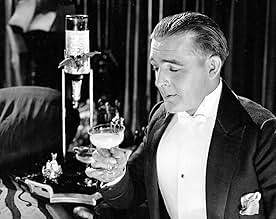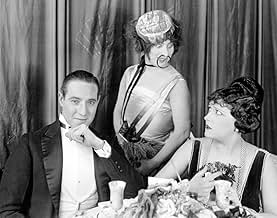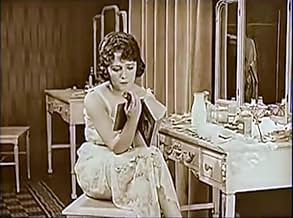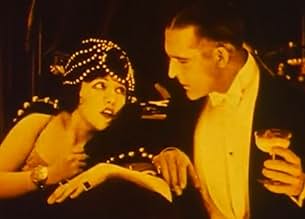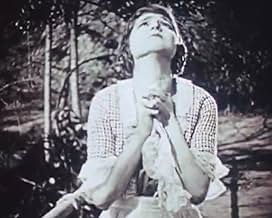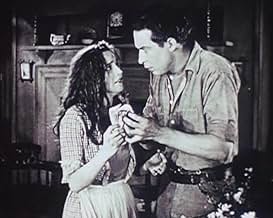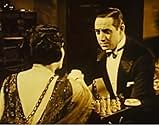IMDb-BEWERTUNG
6,6/10
1382
IHRE BEWERTUNG
Füge eine Handlung in deiner Sprache hinzuSocialite Anatol Spencer seeks a better relation than he has with his wife. He sets up the friend of his youth Emilie in an apartment and she two-times him; he comforts near-suicidal Annie a... Alles lesenSocialite Anatol Spencer seeks a better relation than he has with his wife. He sets up the friend of his youth Emilie in an apartment and she two-times him; he comforts near-suicidal Annie and she robs him.Socialite Anatol Spencer seeks a better relation than he has with his wife. He sets up the friend of his youth Emilie in an apartment and she two-times him; he comforts near-suicidal Annie and she robs him.
- Auszeichnungen
- 1 wins total
Laura Anson
- Vivian's Maid
- (Nicht genannt)
Alma Bennett
- Chorus Girl
- (Nicht genannt)
William Boyd
- Guest
- (Nicht genannt)
Shannon Day
- Chorus Girl
- (Nicht genannt)
Julia Faye
- Tibra
- (Nicht genannt)
Elinor Glyn
- Bridge Player
- (Nicht genannt)
Winter Hall
- Dr. Johnston
- (Nicht genannt)
Raymond Hatton
- Great Blatsky - Violin Teacher
- (Nicht genannt)
Fred Huntley
- Stage Manager
- (Nicht genannt)
Handlung
WUSSTEST DU SCHON:
- WissenswertesGloria Swanson admitted in an interview decades later that Wallace Reid's drug addiction scared her while they were making this film, and she avoided socializing with him because of it.
- PatzerIn the flashback sequence where Emilie is on a swing and two mirrors are set up to give repeated reflections of the action, the cameraman bending over his camera is visible a few times when the swing moves out of the way.
- Zitate
Anatol Spencer: Let's not kiss any more, dear, until after breakfast.
- Alternative VersionenFilm Preservation Associates copyrighted a version in 1999 with a music score compiled and performed by Brian Benison. It was produced for video by David Shepard and ran 117 minutes.
- VerbindungenEdited into Don't Tell Everything (1921)
Ausgewählte Rezension
Cecil B. DeMille, it would appear, had a bit of a thing about ladies' feet. This may partly explain why the first glimpse we catch of Gloria Swanson in the Affairs of Anatol, is a close-up of said body part – bare, exquisitely framed, and being treated to a pedicure.
However, it was very much the DeMille way to introduce his characters in bits, summing them up by focusing us on some tiny yet significant feature. Shortly before the entrance of Miss Swanson's foot, we meet Wallace Reid's impatiently shuffling boots and tapping fingers. By doing this DeMille gives us an impression of the man before we even see his face. And throughout this picture, we can see DeMille has a kind of "inside-out" approach to shooting a scene. Cinematic convention, even back then, was generally to start with a master shot, then draw us in on the details. DeMille begins with the minutiae, then gradually reveals the bigger picture. Take the dancehall sequence where Reid meets the subject of his first affair. We first of all see Reid's view of Wanda Hawley, as if she were seated alone at the table. It is only after her character has been established that we see a shot from a little further back, showing us she is in the company of a lecherous old Theodore Roberts! DeMille's process of gradual revelation especially applies to the splendour of a set, such as the giant fan being pulled aside to reveal a stunning backdrop of stars later in the same scene.
The purpose of all this is not only to make the picture visually attractive and smoothly paced. DeMille was one of the best at this time when it came to representing the thoughts of his characters. When Reid first sets eyes on Hawley, she really is all he can see, with Roberts being an unimportant distraction. At any one time, DeMille is showing us the focus of the protagonists, without often resorting to anything so subjective as a point-of-view shot. It is a subtler equivalent to the superimpositions of imagined figures or objects that he employed in his earlier pictures. With this canny cinematic approach you'd hardly know you were seeing an adaptation of a thirty-year old stage play.
Speaking of which, the original Affairs of Anatol was a popular comedy, and the jokes in theatre productions tend to be in the words, so how to translate it to the silent screen and keep in the comedy? DeMille was no master of slapstick, and his cast were certainly no clowns. However what remains from the original is a kind of growing sense of unlikely silliness, as opportunities for adultery continually appear in Reid's path, only to be flattened by unexpected twists. The world in which the story takes place is so shallow and dignified that these daft situations – slight exaggerations of typical melodramatic plot turns – just about pass for humour.
But the fact that it works at all is largely down to the efforts of the cast. Wallace Reid goes through it all with such po-faced seriousness, and the sober and dedicated manner in which he undertakes his infidelity is actually rather funny. The highlight is surely the appearance of Agnes Ayres and Monte Blue, who act out their little slice of melodrama without even a pretence of sincerity. It is perhaps the most frivolous moment of any DeMille film, and given its place among the familiar DeMille trappings, even Ayres jumping in the river in a suicide attempt looks like a gag.
Sadly, the only cast member who does not seem quite at home here is Gloria Swanson. She is essentially an air-headed young bride, giving her errant husband an unfeasible number of chances, and frankly the role is beneath her. Here and there she gets to show her powerful dramatic presence, but she becomes a somewhat marginal figure as the titular affairs take centre stage, and her talents are largely wasted. After giving impressive turns in several of his biggest hits, this was to be the last of her collaborations with the director. It seems that in DeMille's eyes, Swanson had become little more than a beautiful pair of feet.
However, it was very much the DeMille way to introduce his characters in bits, summing them up by focusing us on some tiny yet significant feature. Shortly before the entrance of Miss Swanson's foot, we meet Wallace Reid's impatiently shuffling boots and tapping fingers. By doing this DeMille gives us an impression of the man before we even see his face. And throughout this picture, we can see DeMille has a kind of "inside-out" approach to shooting a scene. Cinematic convention, even back then, was generally to start with a master shot, then draw us in on the details. DeMille begins with the minutiae, then gradually reveals the bigger picture. Take the dancehall sequence where Reid meets the subject of his first affair. We first of all see Reid's view of Wanda Hawley, as if she were seated alone at the table. It is only after her character has been established that we see a shot from a little further back, showing us she is in the company of a lecherous old Theodore Roberts! DeMille's process of gradual revelation especially applies to the splendour of a set, such as the giant fan being pulled aside to reveal a stunning backdrop of stars later in the same scene.
The purpose of all this is not only to make the picture visually attractive and smoothly paced. DeMille was one of the best at this time when it came to representing the thoughts of his characters. When Reid first sets eyes on Hawley, she really is all he can see, with Roberts being an unimportant distraction. At any one time, DeMille is showing us the focus of the protagonists, without often resorting to anything so subjective as a point-of-view shot. It is a subtler equivalent to the superimpositions of imagined figures or objects that he employed in his earlier pictures. With this canny cinematic approach you'd hardly know you were seeing an adaptation of a thirty-year old stage play.
Speaking of which, the original Affairs of Anatol was a popular comedy, and the jokes in theatre productions tend to be in the words, so how to translate it to the silent screen and keep in the comedy? DeMille was no master of slapstick, and his cast were certainly no clowns. However what remains from the original is a kind of growing sense of unlikely silliness, as opportunities for adultery continually appear in Reid's path, only to be flattened by unexpected twists. The world in which the story takes place is so shallow and dignified that these daft situations – slight exaggerations of typical melodramatic plot turns – just about pass for humour.
But the fact that it works at all is largely down to the efforts of the cast. Wallace Reid goes through it all with such po-faced seriousness, and the sober and dedicated manner in which he undertakes his infidelity is actually rather funny. The highlight is surely the appearance of Agnes Ayres and Monte Blue, who act out their little slice of melodrama without even a pretence of sincerity. It is perhaps the most frivolous moment of any DeMille film, and given its place among the familiar DeMille trappings, even Ayres jumping in the river in a suicide attempt looks like a gag.
Sadly, the only cast member who does not seem quite at home here is Gloria Swanson. She is essentially an air-headed young bride, giving her errant husband an unfeasible number of chances, and frankly the role is beneath her. Here and there she gets to show her powerful dramatic presence, but she becomes a somewhat marginal figure as the titular affairs take centre stage, and her talents are largely wasted. After giving impressive turns in several of his biggest hits, this was to be the last of her collaborations with the director. It seems that in DeMille's eyes, Swanson had become little more than a beautiful pair of feet.
Top-Auswahl
Melde dich zum Bewerten an und greife auf die Watchlist für personalisierte Empfehlungen zu.
Details
- Laufzeit1 Stunde 57 Minuten
- Sound-Mix
- Seitenverhältnis
- 1.33 : 1
Zu dieser Seite beitragen
Bearbeitung vorschlagen oder fehlenden Inhalt hinzufügen

Oberste Lücke
By what name was The Affairs of Anatol (1921) officially released in Canada in English?
Antwort
